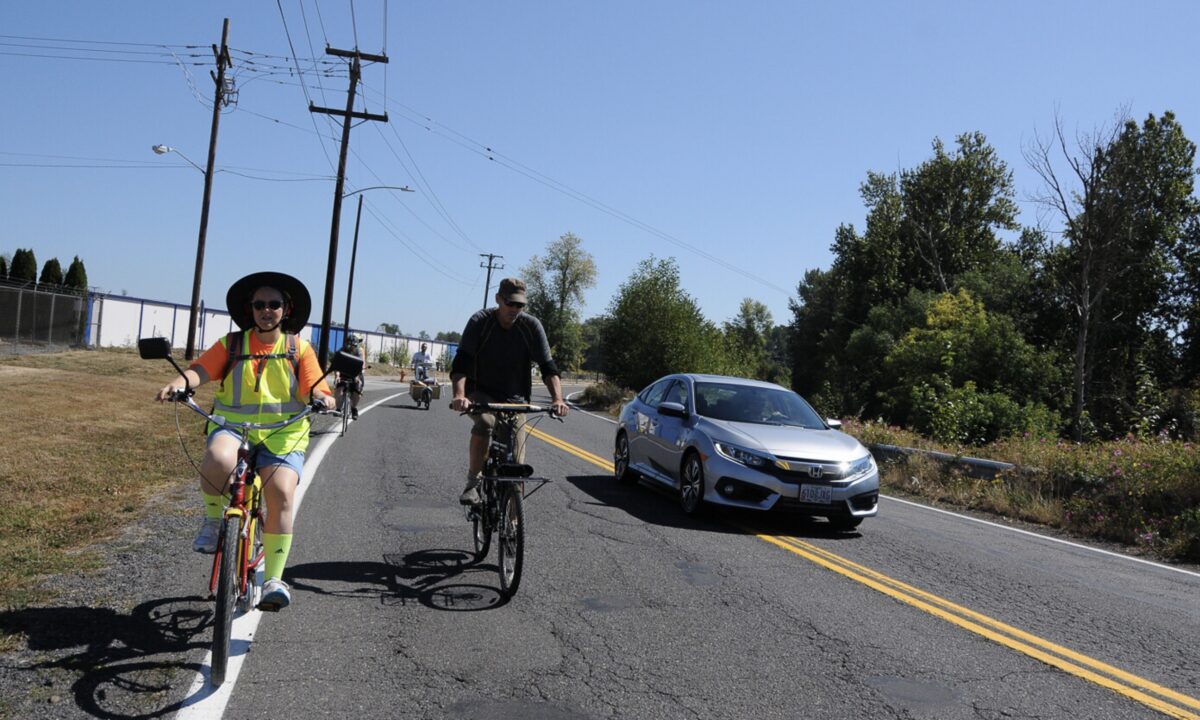
(Photo: Jonathan Maus/BikePortland)
This spring the Portland Bureau of Transportation will spend $4 million on Northeast Cornfoot Road, but the project won’t include any bike facilities. This is despite Cornfoot being a safe alternative to NE Columbia Boulevard and a vital part of the bike network that will one day connect the Cully neighborhood to more than 20,000 jobs in the Columbia Corridor industrial area, the Portland Airport, Cascade Station shopping center and other important destinations. (We focused on this gap during Gap Week in 2016.)
The project on Cornfoot would also connect directly to a $7 million investment into protected bike lanes PBOT just completed on NE 47th Avenue. While PBOT has no plans to add bike lanes to this current project, they’ve already designed a project that would add a separated off-street path along Cornfoot. The problem? It must compete for grant funding, and even if it is selected, it wouldn’t be built until 2027.
Advertisement
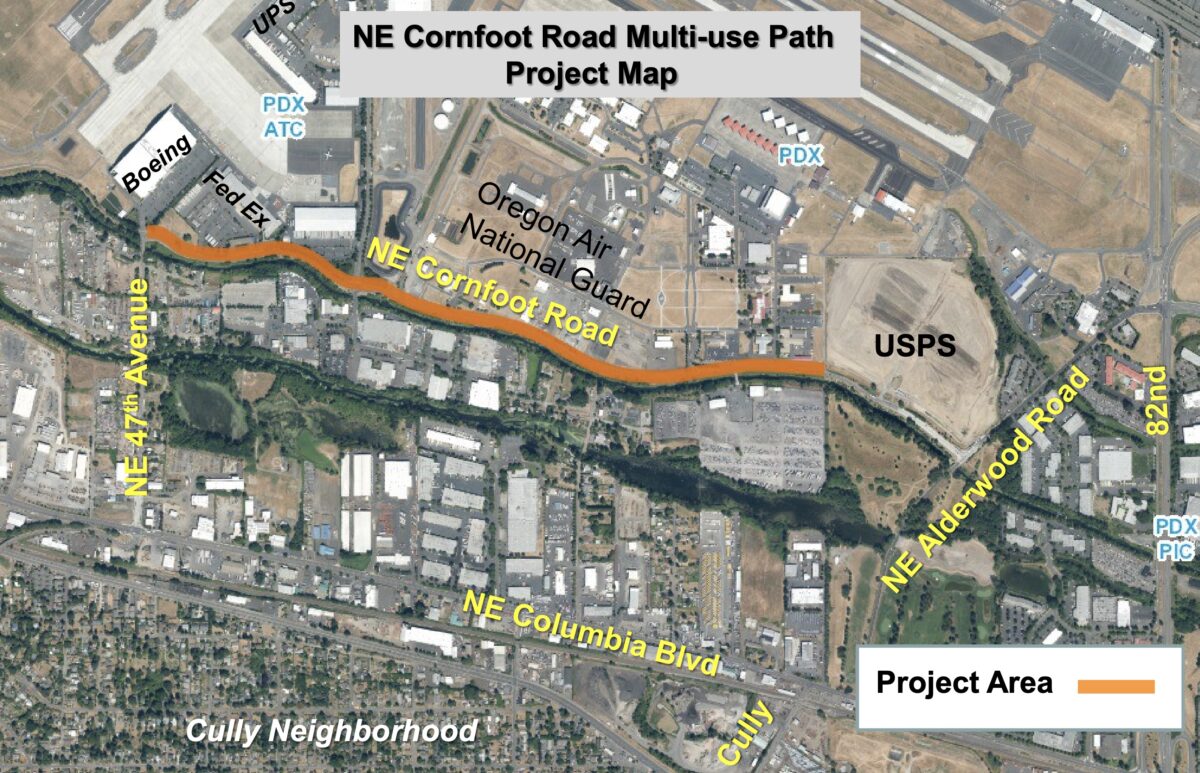
In 2016 Portland was poised to fund a bike path along Cornfoot via a Metro Regional Flexible Funds Allocation (RFFA) grant. In that grant application, PBOT wrote,
“Although there are many jobs in the area, there is a lack of pedestrian and bicycle facilities that provide options besides an automobile to get to the jobs. The bicyclists that do use NE Cornfoot Road must ride on a road with no bike lanes and no shoulder… The intent of the project is to make it more feasible for nearby residents to use bicycle transportation for commute trips rather than drive, thereby increasing the community’s access to jobs.”
At a meeting of the Portland Freight Advisory Committee this morning, PBOT planner Zef Wagner shared they had funding all but secured for this project, but Covid and other hits to the agency’s revenue resulted in it being cut. Now they plan to try again with a grant application into Metro’s 2025-2027 RFFA process. With plans at 95% design and its previous success in 2016, PBOT seems well positioned to win the grant this time around.
Why not add bike lanes to the project breaking ground this coming spring?
PBOT says Cornfoot is just too narrow. At 26-feet wide, with no shoulder, and a high volume of large freight trucks, there’s no extra space for a bikeway unless the road is widened or turned into one-way for cars and trucks (both of which are considered non-starters).
“This is more about creating a cohesive network, from the neighborhoods all the way to the airport, and this is really the last gap in that network.”
— Zef Wagner, PBOT
The most feasible option is to build an off-street, multi-use path (MUP) for bicycle users. That would be cheaper than widening the road and would have the added benefit of separating vulnerable users from truck and car traffic.
The $4 million PBOT project that’s due to break ground in early 2022 ($2 million from House Bill 2017 and $2 million from local gas tax/Fixing our Streets program) will install a guardrail on one side of Cornfoot Road, lay down 1.1 miles of new pavement (between NE Airtrans Way to Alderwood Road), and add more streetlights.
In order to build a bike path on the north side of Cornfoot Rd that would connect the new bikeways on 47th Ave to an existing path outside the U.S. Post Office facility at Alderwood (and future paths due to be build from NE Columbia Blvd to Cornfoot), PBOT needs to find about $5 million.
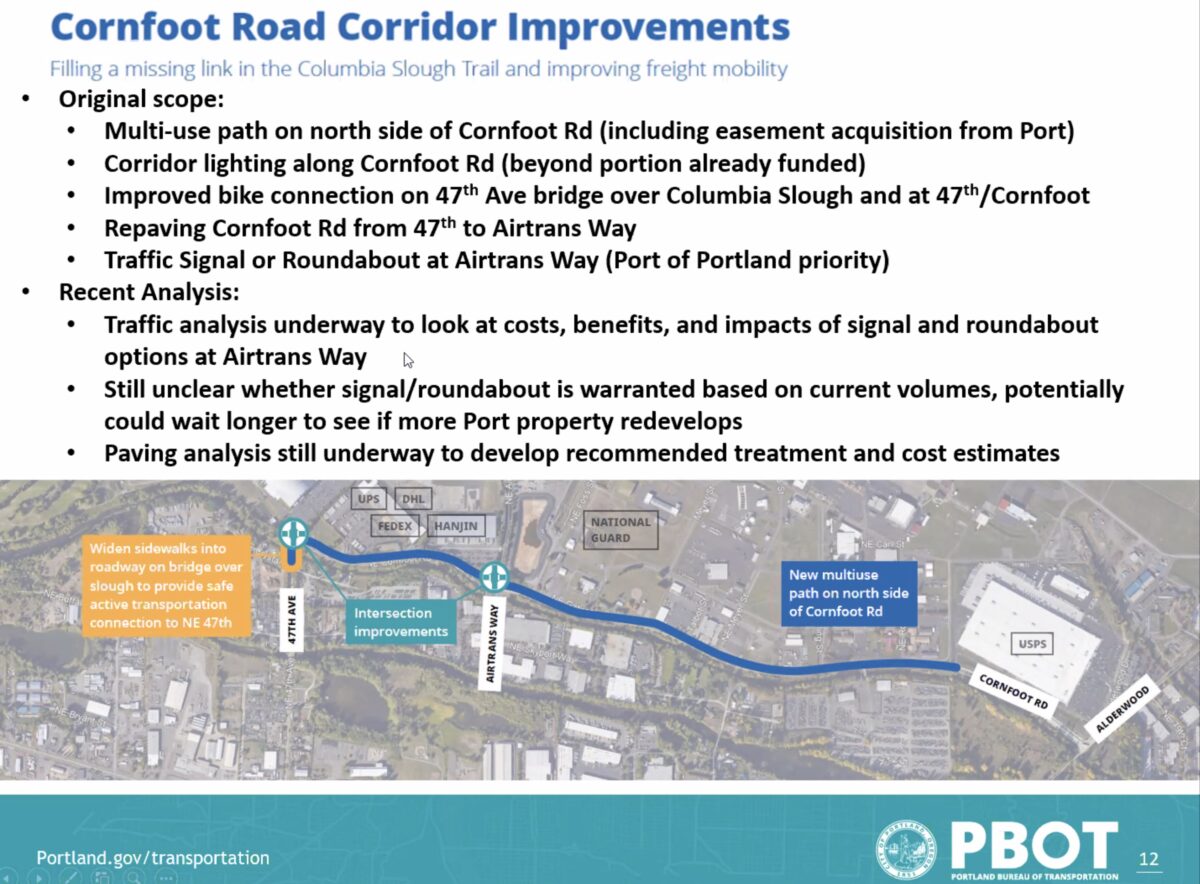
The project (above) would include the multi-use path between 47th and (just west of) Alderwood, intersection improvements at 47th and Airtrans Way, as well as new pavement between 47th and Airtrans Way. At the meeting this morning, Wagner said PBOT is considering a roundabout at the Airtrans Way intersection, but haven’t yet determined between that and a traffic signal. PBOT generally prefers roundabouts because they’re safer and better for traffic flow than signals, but Freight Committee Chair Jana Jarvis made it clear she does not like them.
Former Committee Chair and FedEx project engineer Pia Welch made a comment that seemed to question the need for the project. “I’d be interested to see what your traffic analysis shows,” she said, “because I work in that area and I don’t see a lot of pedestrian and bike traffic.” Wagner said PBOT has counted some bike commuting traffic on Cornfoot, but that overall, “I think this is more about creating a cohesive network, from the neighborhoods all the way to the airport, and this is really the last gap in that network.”
Speaking of that network, the “leveraged projects” map below (from the Port of Portland in the 2016 grant application) shows how all the pieces are coming together. You can see that another path is planned from Columbia to Cornfoot along Alderwood as part of a Portland Parks and Recreation project, and there’s also an ODOT project that will build another section of path along Columbia.
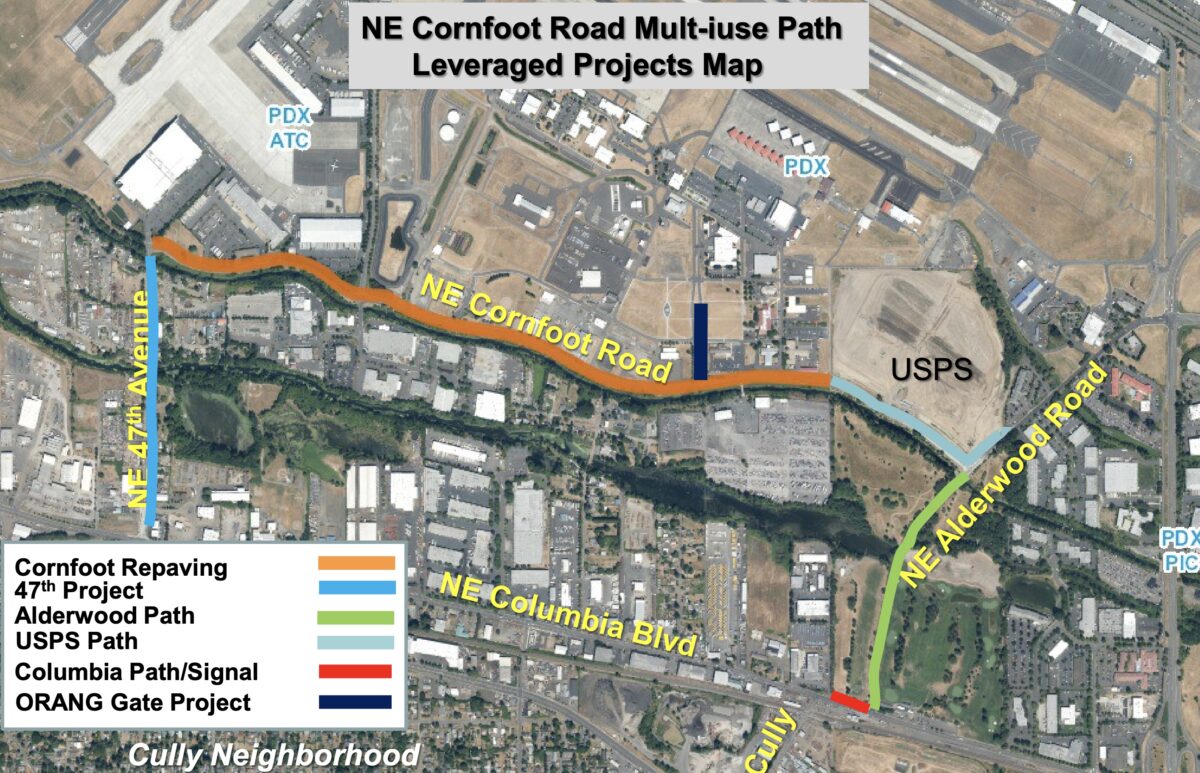
While this path project is promising, it’s still not a shoe-in for RFFA funding. And even if it is funded, the 2027 construction date is discouraging and underscores the systemic problems we have in how our project funding and implementation processes fail to line up with our climate and equity goals and values.
Cornfoot Road is just one of nine projects PBOT is vetting for possible RFFA funding (see below). With an expected total amount of $22.5 million, PBOT also wants to build a protected bikeway on SE 7th Ave, improve access to transit on 148th, build better access to 82nd Ave at four greenways, build new crossings on W Burnside, create complete streets on SW Taylors Ferry Rd and Cully Blvd/57th, and add safer crossings on Martin Luther King Jr. Blvd. Stay tuned for more on those projects as well as opportunities to weigh in and show support.
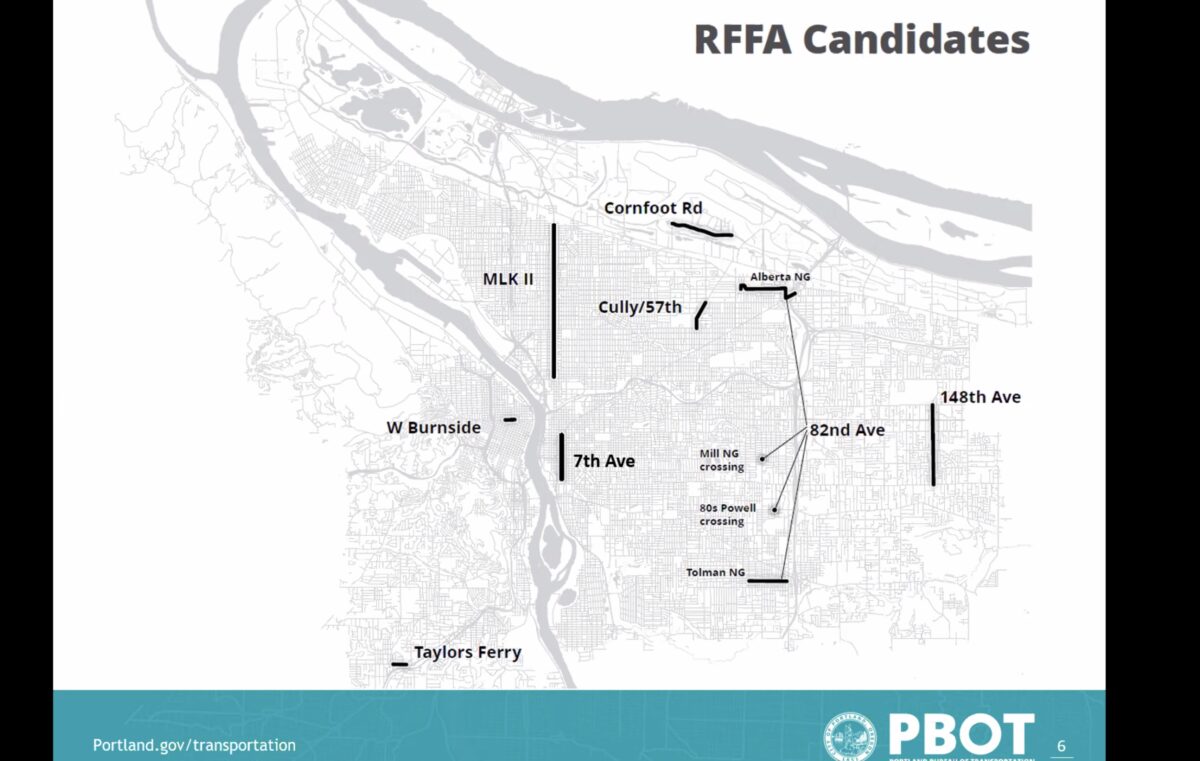


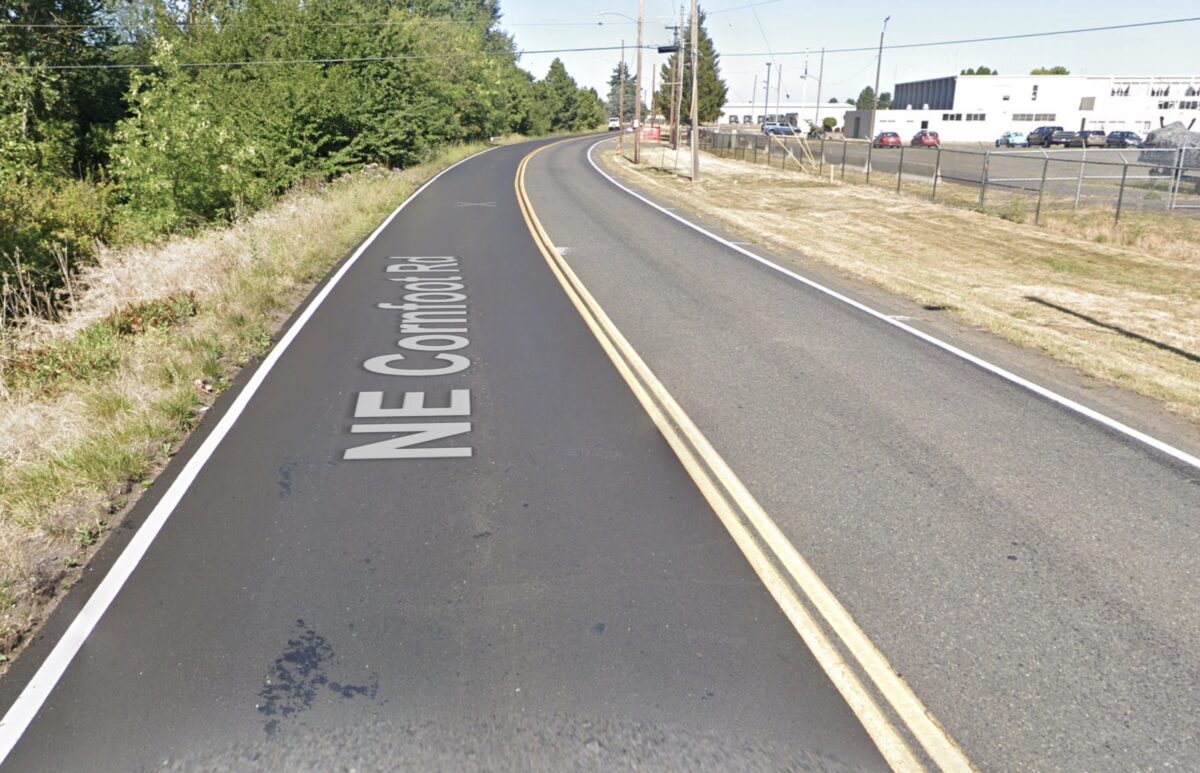
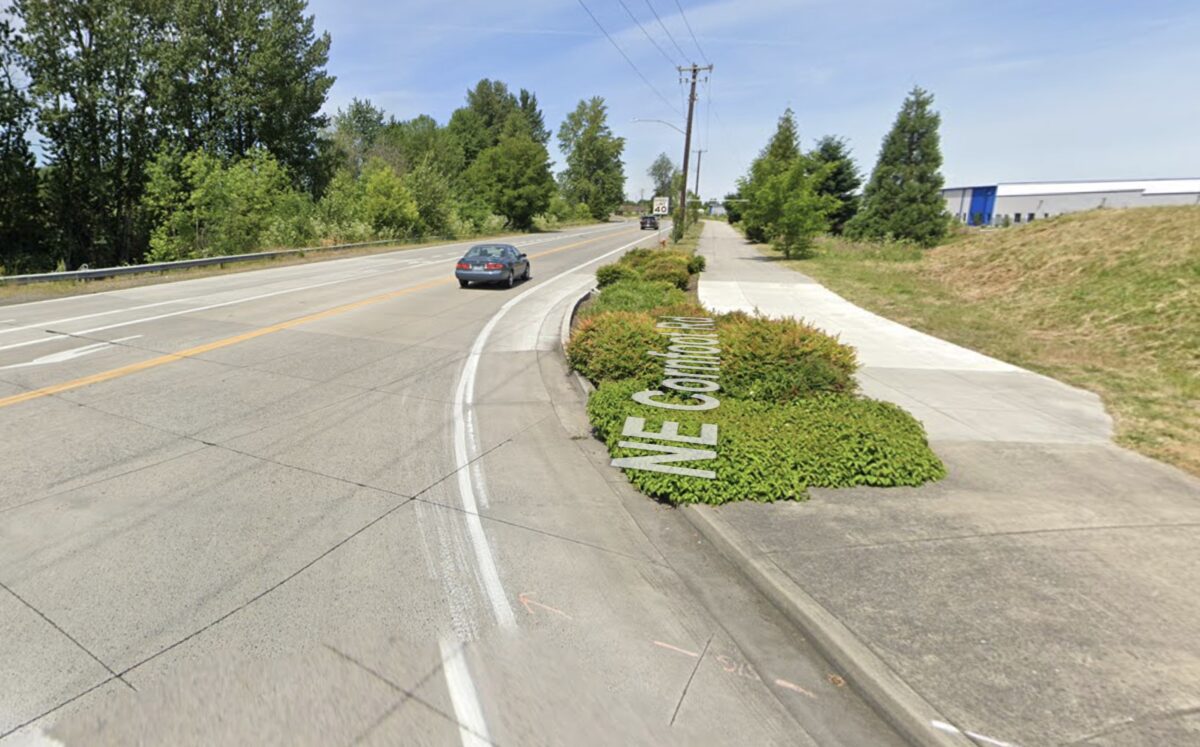
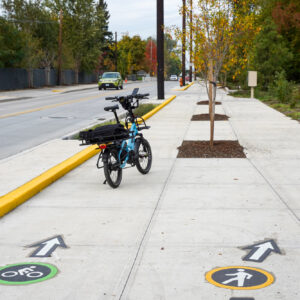
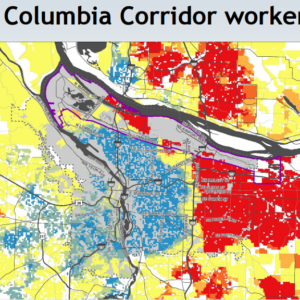
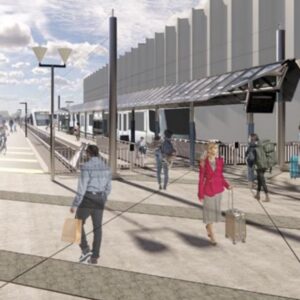
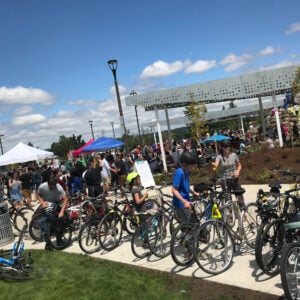
Thanks for reading.
BikePortland has served this community with independent community journalism since 2005. We rely on subscriptions from readers like you to survive. Your financial support is vital in keeping this valuable resource alive and well.
Please subscribe today to strengthen and expand our work.
The old “don’t need this because no bikes use this road” ploy (because there is no realistic way to use this road). Sigh.
I don’t see any cars crossing the Columbia between Camas and Troutdale, yet people out here keep asking for a bridge.
How can the city legally do a project that does not provide some accommodation for bicyclists and pedestrians? Seriously, this seems to conflict with ORS 366.514, which states:
366.514 Use of highway fund for footpaths and bicycle trails. (1) Out of the funds received by the Department of Transportation or by any county or city from the State Highway Fund reasonable amounts shall be expended as necessary to provide footpaths and bicycle trails, including curb cuts or ramps as part of the project. Footpaths and bicycle trails, including curb cuts or ramps as part of the project, shall be provided wherever a highway, road or street is being constructed, reconstructed or relocated. Funds received from the State Highway Fund may also be expended to maintain footpaths and trails and to provide footpaths and trails along other highways, roads and streets.
I have biked that section of Cornfoot so I know there is some bicycle use.
Simple repaving projects have never been subject to the Bike Bill.
Because everyone ignores that law.
Actually, it’s probably because the project is being funded by Metro’s Regional Flexible Funds Allocation (RFFA), which appears to get revenue from federal sources:
https://www.oregonmetro.gov/public-projects/regional-flexible-funding-transportation-projects/background
Whereas the statute you cited applies to the State Highway Fund only.
This is why we should stop pretending that the Bike Bill is a complete streets law.
The Bike Bill kind of feels like the Bike Plan. There, somewhere, but essentially forgotten. We used to have an organization that would hold PBOT and ODOT to account, but they’ve since rededicated themselves to applying for grants, and it wouldn’t be good for business to sue their benefactors.
Sure. But in this case, a lawsuit would fail, because the bike bill doesn’t apply to repaving projects.
Yes, but is it JUST a repaving project, or is PBOT framing it that way to avoid their responsibilities?
I’ve biked on Cornfoot a number of times. I’m sorry that I haven’t been there frequently enough for Pia Welch to notice me. How many years had she been on the freight committee? Seems like forever.
She’s worked at FedEx for over 32 years. FedEx has a major facility on Cornfoot Road; so maybe she should be recusing herself from commenting and voting on this project?
The other point to look into is: would this proposed change in the original project scope affect the project scoring and thus its ranking for funding approval?
PBOT’s arguments about why the bike lanes can’t go on Cornfoot don’t sound totally ridiculous, but I don’t understand why this shouldn’t all be one project. Like, sure, the legally-required bike lanes you should be adding can’t go right next to the road; they have to have their own path — OK, but that’s still part of the project. It shouldn’t be severed and have to compete for funds on its own.
Also hoping PBOT stands firm on those roundabouts vs. the “truck efficiency at any cost” freight committee.
Don’t see many bikes on Cornfoot? Seriously? Cornfoot has been a part of the “Airport Loop” route for decades. If she hasn’t seen many bikes, it may be that folks that cycle this route regularly know to avoid certain peak auto traffic times (aka rush hour).
I live in the Cully neighborhood and bike to work near the airport. I ride Cornfoot occasionally and I agree with the city, there are better ways to spend the money.
The most direct route from the Cully neighborhood to the airport/cascade village is Cully blvd and Alderwood. Alderwood also does not have bike lanes or a shoulder. If I had to choose between Alderwood and Cornfoot, I would put bike facilities on Alderwood. But better still, I would trade it all for a SINGLE safe east/west cycling corridor east of 72nd.
It’s disappointing to see this story repeated time after time. Critical gaps languish for decades because there’s never close to sufficient funding. RFFA is a great example where a group of really necessary projects must compete over money that can only finance a couple of them.
Bikeportland recently had some coverage about the recent bike “improvements” on westbound Beaverton-Hillsdale Hwy. at Bertha. It didn’t mention the existing bike lane gap on Bertha between B-H Hwy. and Vermont – a distance of about 2 blocks. South of Vermont, Bertha provides a complete bike lane connection to Barbur and Terwilliger. The intersection project included repaving this 2-block bike gap. And you guessed it – no bike lanes were added.
With all the climate change urgency and transportation as the greatest carbon emitter in the state, you’d think active transportation would finally be taken more seriously. So far mostly lip service. At the rate we’re going, our bike network won’t be completed until after 2100 when Portland has the climate of Phoenix, AZ.
Call it Catch 2030. They don’t see many bikes because there are no continuous safe routes for bikes, therefore a bike route that closes a gap is unnecessary.
Look, there’s all that new pavement on NE 47th, nobody is biking on it so we might well park trucks on it.
I agree there shouldn’t be bike lanes on Cornfoot given there is ample space and an existing plan to build a multiuse path along this stretch. But what I don’t understand is why PDOT separates the motorized improvements from the MUP connection.
Presumably, a significant expense is just rolling trucks, material and personnel to the location, so wouldn’t combining the two projects reduce costs? Furthermore, why is the cost of the MUP in the millions? We don’t need to gold plate anything here. There is already a sidewalk from 47th to AirTrans Way, and the easement from there to the existing MUP extending from Alderwood is flat, unencumbered, and maybe a mile in length.
I rode this section today just to make sure my impressions from numerous rides along Cornfoot are correct, and it seems this could be handled by volunteers with a gofundme account, while the pros at PDOT push pencils for the next five years. The real “systemic problem” this underscores has little to do with aligning climate and equity goals – it’s that PBOT, and more broadly, our city, county, metro and state all lack imagination, urgency, and management capability in the work they are supposed to do on our behalf.
If the bicycle bill had any teeth, this project would include bike infra – they are rebuilding the road, aren’t they? If they don’t want to build on-road facilities, they should at least be building the separated path AT THE SAME TIME!
I rode this today trying to see if I could do a bike to the airport trip. I’m more infuriated having ridden it about the “I don’t see a lot of bike and pedestrian traffic” comment.- Yeah – because it is extremely dangerous!!! I’m fairly bold of a cycler but during a dry clear day at 11am it was scary, there’s NO WAY that it could be considered safe when I would actually need to be on it to get to PDX for my flight. I did make it out to the airport today, and I really wish that I felt safe enough to bike out there tomorrow morning – this is the ONE spot where I just cannot do it. But comparing a 35 minute bike ride with a 68 minute Trimet trip or a $40 Lyfy – the choice I would WANT to make would be to bike. I don’t have that much that I’m travelling with, it would be nice to get some exercise it before/after my 8 hour flight. It sucks, especially given that PDX has a 12 page document about making the airport bicycle accessible. But cars get priority as usual.
The road is listed as a Shared Roadway with Wider Outside Lane on the official PBOT Portland By Bicycle map. No way anyone feels safe riding Cornfoot as-is. I was run into the gutter yesterday by a passing freight truck.